Welcome Spring! The daffodils are blooming along the highway, cherry blossom buds are beginning to pop up along the branches, and the sunshine gets a little earlier, brighter, and warmer every day. This little row of felted spring chicks is sure to be one of your very favorite home decorations.
These birds are so fun and simple to make, once you get the hang of it, you can make about forty in an hour or so. Make a few for everyone you know — they are perfect decorations for spring and Easter! And you can leave them perched in your home year-round to make you smile. Now, let’s get started!


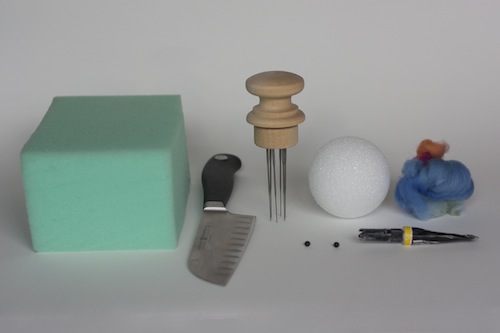
Before you begin, you’ll need to gather up some supplies (all of these, excepting the kitchen knife, can be found online or at any craft store):
–wool felting tool with several needles
–wool roving in the color of your choice, and contrasting color for the beak
–2″ foam balls
–felting mat (If you don’t have a mat, you can use a hunk of upholstery foam as pictured above)
–sharp kitchen knife
–glue with a precision head
–two beads
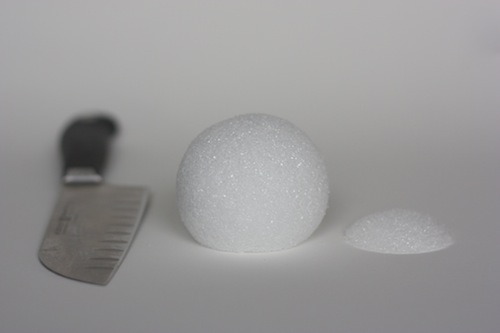
First, cut one edge off of the ball. This allows the bird to sit flat, and also provides him a head!
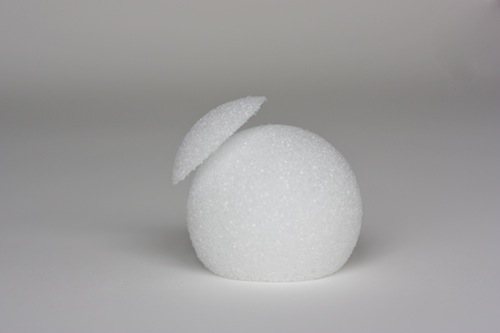
See how cute he is already?
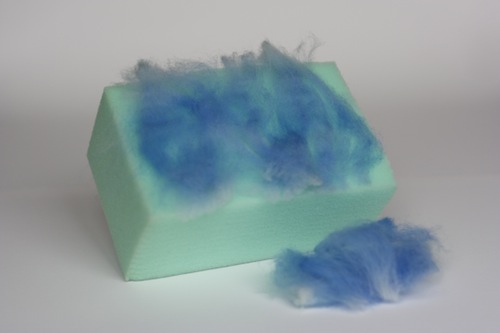
Next, spread a thin layer of your wool roving across your mat or foam. Spread another layer, fibers perpendicular to the first, on top of it.

Then, spread one more thin layer of roving, fibers perpendicular again. The cross, hatch pattern allows the wool to matt better. Not sure what this means? Read on, you’ll get it soon!
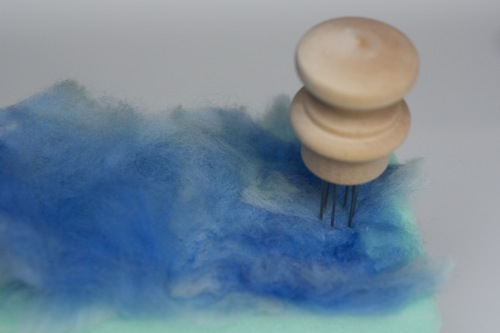
Using your felting tool, pierce the layers of wool repeatedly. Don’t get your finger, those needles have barbs! The more you pierce and poke, the more matted and intertwined the wool becomes. After a couple minutes, you should have a pretty well flattened rectangle of felt.
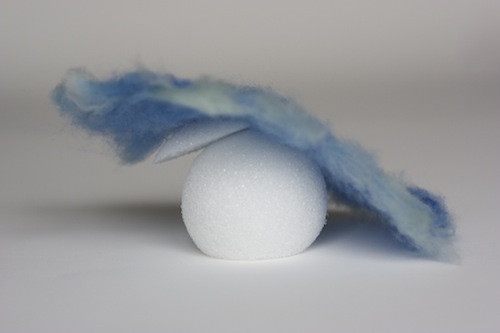
Peel the felt off your mat, and lay it over your foam ball, head and all. The head doesn’t need to be attached with anything, because we are going to hold it in place with the wool itself. (Don’t try and glue it — it will just gum up the needles, and won’t hold it any more effectively.)
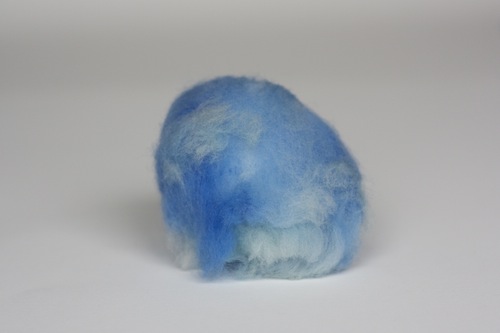
Wrap the felt all the way around the bird body, tugging it a little in places to allow full coverage. It’s no biggie if you have a thin spot or two, you’ll learn how to cover those up soon.

Now you get to go to work felting the wool right onto the styrofoam. Don’t get your finger, those needles have barbs!
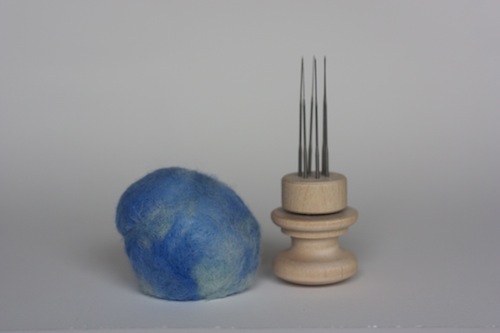
The more you pierce and poke, the more matted and tight the felt will become. It’s a pretty cool process, and you may get some satisfaction out of having very tightly felted birds.
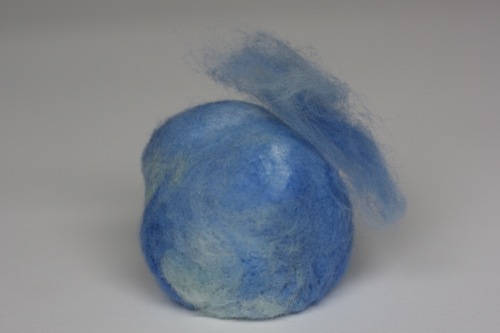
Do a little examination of your bird. Any little spots where the foam shows through, you can simply felt over with a small little bit of roving. Make sure you separate it a little bit, and cross the fibers before laying it down, so it felts nicely.
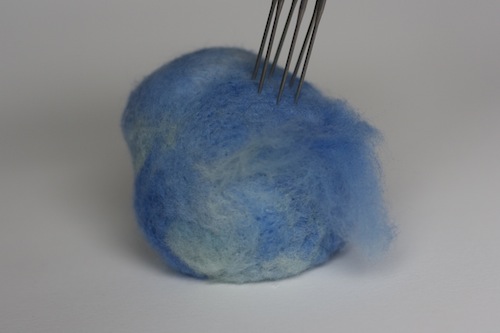
Watch out! Those needles have barbs on them!
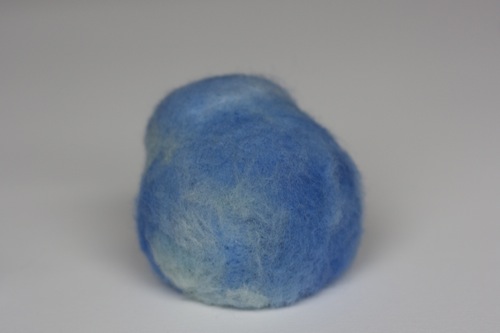
Ahh, beautiful.

Now that the body is covered well with felt, it’s time to make a tail and beak for the little fella.

Begin with the same process, just a lot less wool. It’s not an exact science, so start with a smaller amount than you think you’ll need and add roving as you go.
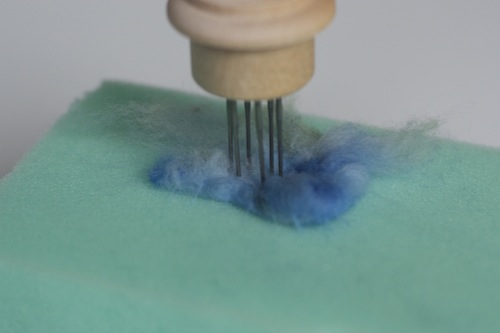
This time, you’re actually creating the tail shape as we felt by folding in the edges, so that the wool begins to form a felted triangle. This is where you can allow your creative juices to flow, and make whatever size, shape and color of tail feathers you can imagine!
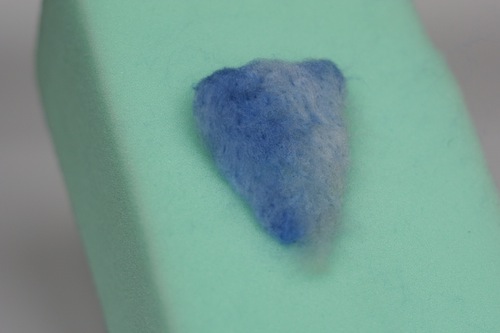
You are done when the shape you’ve got looks good to you.
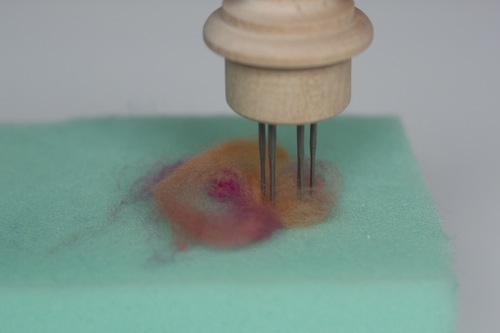
Next, use your beak roving to do the same thing, even smaller, for the chick’s beak. It doesn’t have to be a perfect triangle, or a triangle at all!
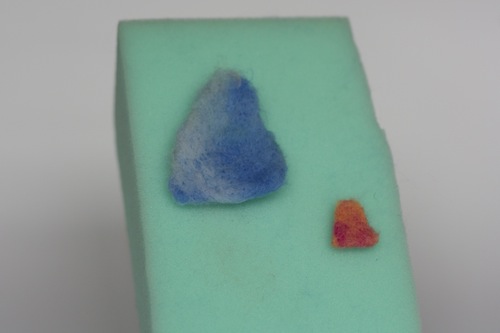
Here are the tail and beak ready to be felted onto the bird’s body.

Use the very same technique — place the felt where you want it and pierce and poke with the tool until the tip of the tail is felted completely in place. You can leave the end to poke out a little.
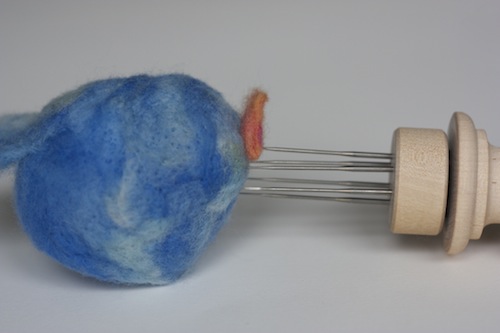
On the beak, begin felting underneath, so that it ends up sticking out straight.
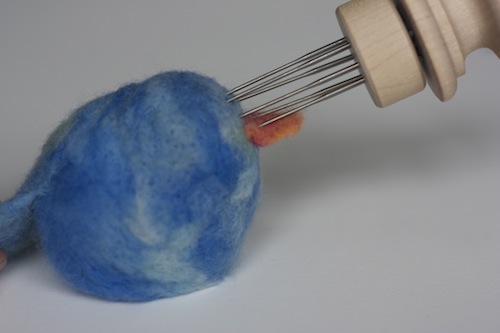
Come back on top just a bit to even out the felting. When you are holding these smaller pieces in place and felting with that tool, you really should remember to be careful of the barbs. Now that you’ve come this far, it would be a shame to ruin the bird with blood stains!

And, there he is. A healthy spring chick. These birds look great even without eyes, and if you like this look, just leave him at this stage and call him a beautifully finished project.
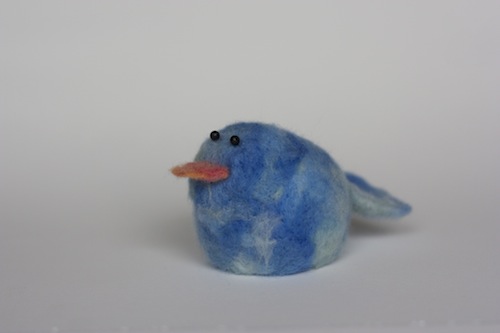
If you want to give him that little extra personality, simply dot a bit of glue right onto the felt, press the bead into the glue and hold in place for a couple seconds. Do the same for the other eye.

After you make one and see how easy fun and easy it is, you’ll want to make a whole row of them…

…a little family, even!


Finally, you can perch them in your home to help you enjoy the wonder of springtime.
Project by Miranda Anderson for Design Mom.
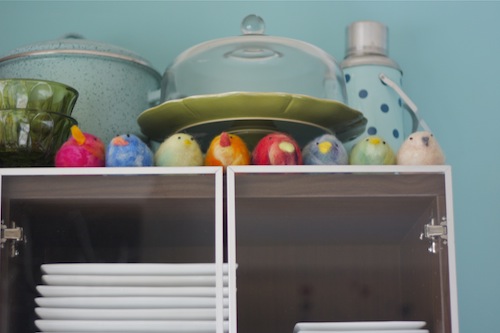
Oh I’ve wanted to try felting for so long! Thank you SO much for the very simple and clear tutorial! I’m definitely going to be making a few of these adorable birdies.
These birds are wonderful! I finally got brave enough to try needle-felting last year, and it’s really fun and easier than you think. Thanks for the great project idea.
Wow, those birds are so cute. You make it look just simple enough for me to give it a try! They would perfect for an Easter basket!
We will definitely give those a whirl! I have all the supplies already, now I just have to actually DO IT! Thanks for the inspiration!
Cheers!
Very cute, but one of those projects I must admire from afar. I’ve been put on a ‘new craft supply’ diet!
So that tool is all that’s needed to make the wool felted? Do you have to turn it?
I love the way that these little birdies are so colorful! I’m a sucker for rainbows.
Yep Sharon, with the felting tool (armed with needles) and some wool roving, you should be able to felt the wool into any shape you hope for! Good luck!
Oh, and no turning, just poke it straight up and down.
Thank you for sharing this! Those birdies are adorable. Is it okay to Pin this tutorial?
I’m glad you like it! Feel free to pin, pin away!
Needle felting, ahhh it’s so fun and even slightly therapeutic as long as you don’t get a needle in the finger. :)
Those are so adorable! Love this!
These are SO Cute! The best are all the little birdie butt lined up in a row. Love it!
Super cute little birds. Needlefelting is like sculpting with wool, I’m loving it!
Only Miranda can whip up chicks like that with a blink of an eye. How absolutely charming they are! This is such a great DIY!
Those make me smile and they don’t take up a ton of space which is nice. I know you mostly do design but I know you love children (you have 6) and I am trying to spread the word about a wonderful group trying to save children in Uganda. I am not asking you to post on it or anything but I think you would be touched by the video. Kony2012. com. Thanks for all the inspiration you give us daily.
So sweet! What a fun weekend craft! I will be making a few of these birds soon to go with my Easter decorations. Thanks for sharing!
These are so sweet! Definitely going on my list of spring kiddo projects!
Felting looks so fun and those are so cute! I want to try it!
Oh, I love these! Ralph’s my favorite.
I heard felting can be quite messy….is this true?
I haven’t had a problem with a mess at all! The roving holds together in a ball pretty well, and once it is felted, it is tight like fabric. Good luck!
I love the felting trend. I love how the colors mix together into a marbled effect. pretty little birds!
omg, how adorable
Those are so cute. But I have a question, is that needle sharp? It looks like it has barbs? :)
They are adorable- I’ve been wanting to learn how to felt for a long time….maybe this will be my reason.
Thanks =)
These little chickies are so very very cute! What a great idea!! You could sell these on Etsy and they would fly off the shelves!! :)
I wouldn’t have the patience to actually make these myself, but they are so CUTE!
I’m in love! We’ll be doing this.
Question: I thought the eyes looked like little pins; maybe those could be used to both attach the head and as eyes? Without seeing the dimensions, it’s hard to know if a pin would be long enough. (And, of course, they wouldn’t be ideal with little ones around :)
These are so totally sweet! I’ve wanted to try felting for a while now, and this project doesn’t seem intimidating to this beginner. It might be fun to try with my daughter-in-law, who started knitting when she was in medical school and hasn’t stopped since.
Here’s to the glorious renewal of Spring!
Spring Break project, here we come! I can’t wait!
Am definitely going to do these little chicks. Thanx for sharing.
Saw your and your lovely family house hunting. Actually, I’ve seen it several times. One of their best. Love your choice. Understand son James and Laura and Harry had a wonderful visit with you and yours. Harry talks about the visit all the time.
I am deeply impressed. So terribly, utterly cute. I got a set of felting needles just to make myself a row of chicks. I swear I’ll be careful! Thanks for the warning.
Love it!!! I have some wool roving left over from spinning yarn!!!
These are absolutely adorable I only have one question…As I have a wood stove for heat and we all know how they create dust…How do I keep the little buggers clean? Other than that I think I will have to make a few to add to Easter baskets for my grand-babies this year as their parents told me I couldn’t add any more live chicks…LOL.. Thanx for the tutorial…
So cute! I have always been curious about felting but a little intimidated at the same time….not any more! Thanks for showing it is nothing to be scared of :)
I love this!!!!
These are so cute and you have made it look so doable I might try it even though I’ve never worked with felt before. Thanks for the great tutorial!
We’re a bunch of volunteers and starting a new scheme in our community.
Your website offered us with useful info to work on. You’ve performed
an impressive job and our entire group shall be thankful to you.
Those are so cute! My mom loves to felt!